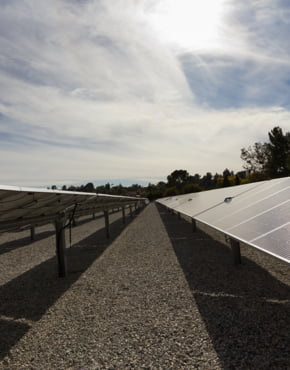Water strategically stored in reservoirs and groundwater banks across state will support water reliability when dry conditions return
Thanks to continued water efficiency among Southern Californian residents and businesses and two wet years, Metropolitan Water District enters the new water year today with enough water in storage to ensure water reliability for the region if dry conditions return this year.
Metropolitan Interim General Manager Deven Upadhyay said the investments the agency has made in storage, as well as water efficiency and system flexibility, have helped prepare the region for the weather extremes the state is expected to face in the future.
“We’re always preparing for the next dry year,” Upadhyay said. “We’ve had a few years of reprieve since the last record drought, and we’ve taken every opportunity to store as much water as possible in our diverse storage accounts across the state and Southwest.”
Oct. 1 marks the start of the water year to align with the natural hydrologic cycle across the United States. Since October is typically the month with the lowest precipitation, it’s considered a good starting point for a new year, allowing water managers like Metropolitan to plan and make informed decisions about available water supplies.
The northern Sierra and the Colorado River Basin – Metropolitan’s imported water sources representing roughly half of the region’s supplies – saw average precipitation in 2024. And they both measured above-average snowpack. The resulting runoff in the northern Sierra is forecasted to be about average. In the Colorado River watershed, however, forecasted runoff is only about 83% of average – a discrepancy increasingly seen as warmer temperatures earlier in the spring cause increased evaporation and water use by plants. Still, Metropolitan was able to increase storage in both imported supplies.
Metropolitan is on track to have approximately 3.9 million acre-feet of water in storage by the end of the calendar year – exceeding the district’s last record storage of 3.4 million acre-feet. (An acre-foot of water is nearly 326,000 gallons, about the amount used annually by three typical Southland families.)
Upadhyay said Metropolitan is strategically storing as much water as possible in reservoirs and Central Valley groundwater banks that can serve communities dependent on supplies from Northern California through the State Water Project. These communities were hit particularly hard by the last drought and faced emergency restrictions on water use in 2022 because deliveries from the State Water Project were slashed to record lows.
Metropolitan also anticipates Southern California’s largest reservoir, Diamond Valley Lake, will be at its 810,000 acre-foot capacity by the end of this year. And the agency has nearly filled its storage account in Lake Mead on the Colorado River.
Metropolitan is also making investments to re-engineer its infrastructure to allow water stored in Diamond Valley Lake and Lake Mead to be delivered to more communities.
“We are storing every drop we can, everywhere we can. We’re also taking steps to increase access to the water we have stored,” Upadhyay said. “And while much of this storage is thanks to above-average precipitation and strategic planning and operations by Metropolitan, we must also credit Southern Californians for becoming more efficient in their water use.”
Upadhyay encouraged Southern Californians to continue their commitment to water efficiency. And he said Metropolitan would continue making investments to ensure reliable water for all communities.
The Metropolitan Water District of Southern California is a state-established cooperative that, along with its 26 cities and retail suppliers, provides water for 19 million people in six counties. The district imports water from the Colorado River and Northern California to supplement local supplies, and helps its members to develop increased water conservation, recycling, storage and other resource-management programs.
Media Contacts
